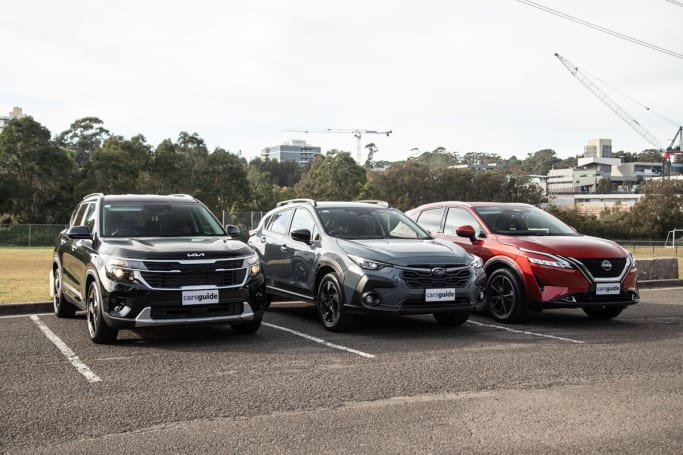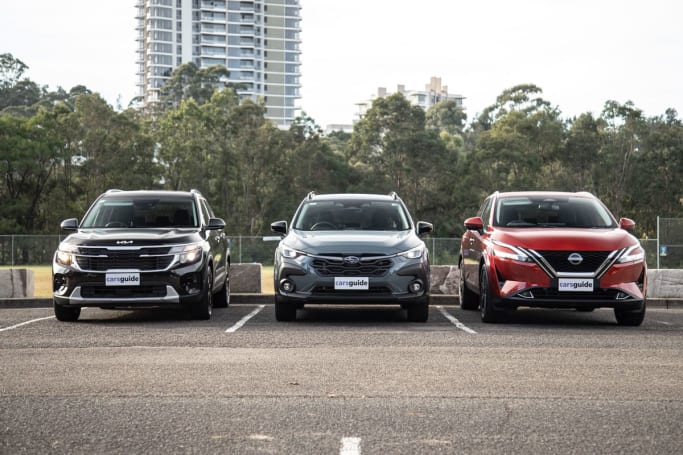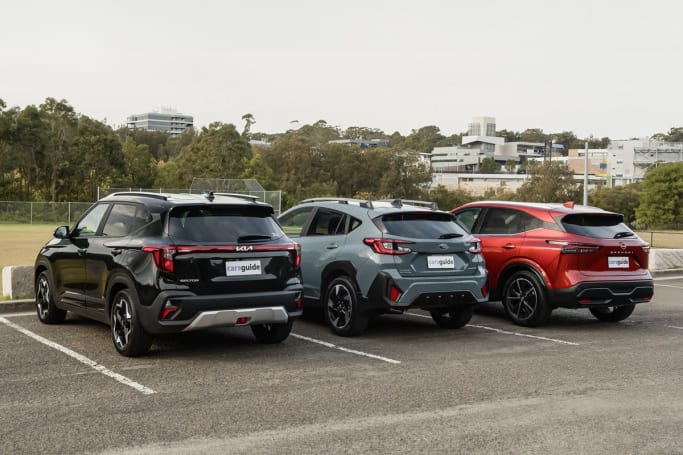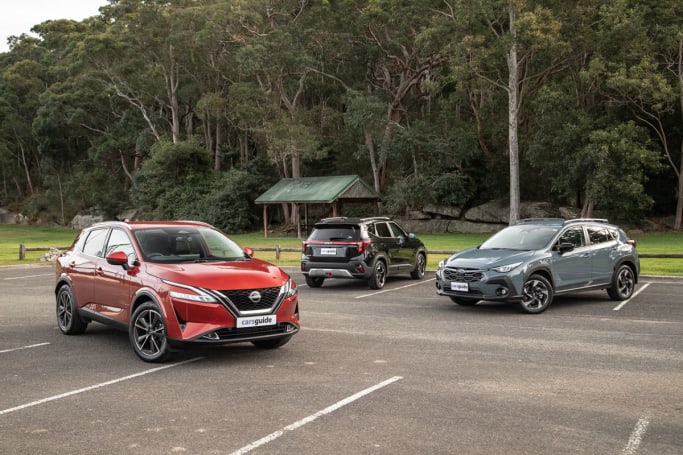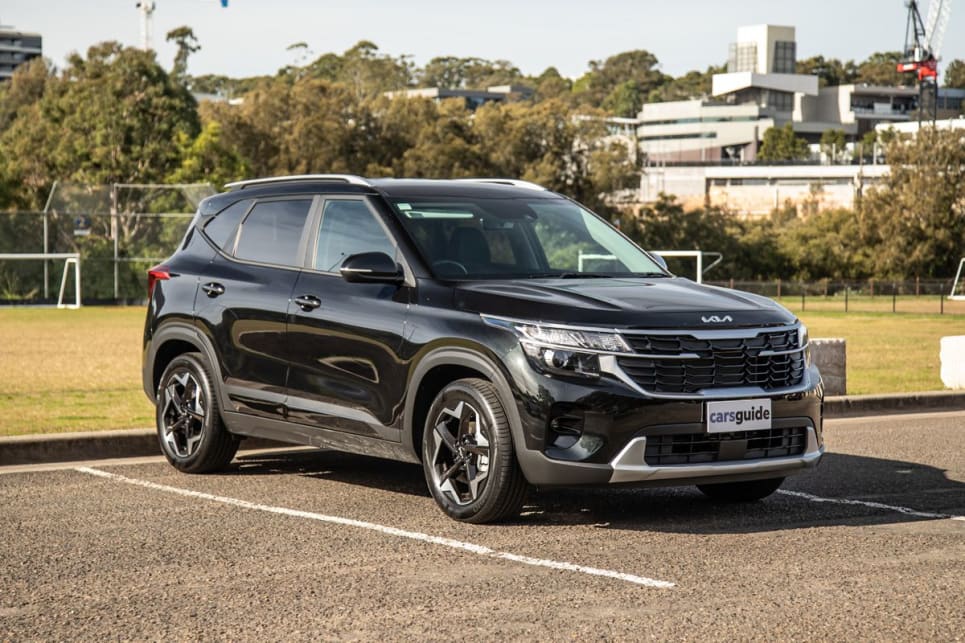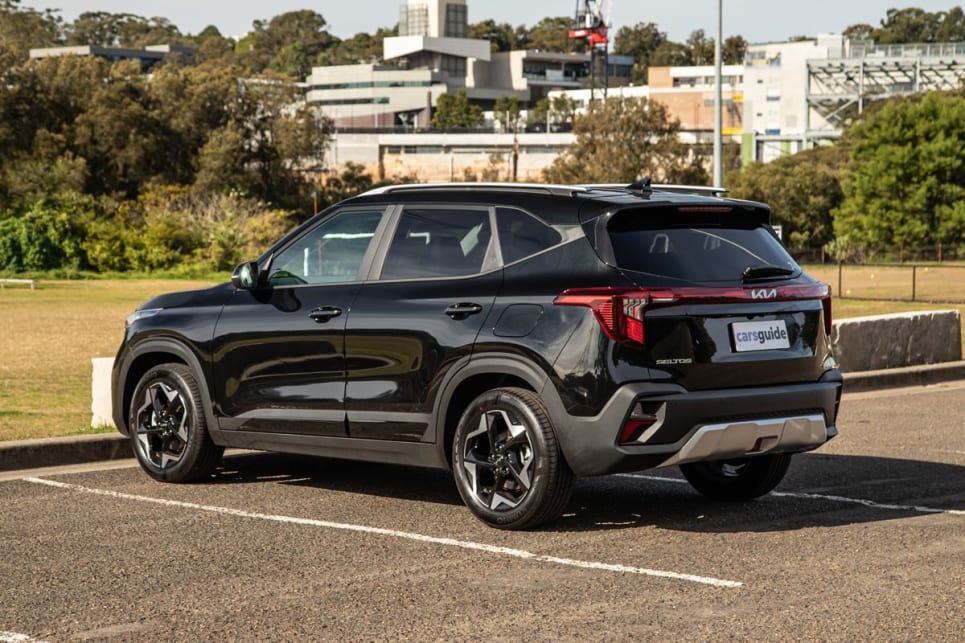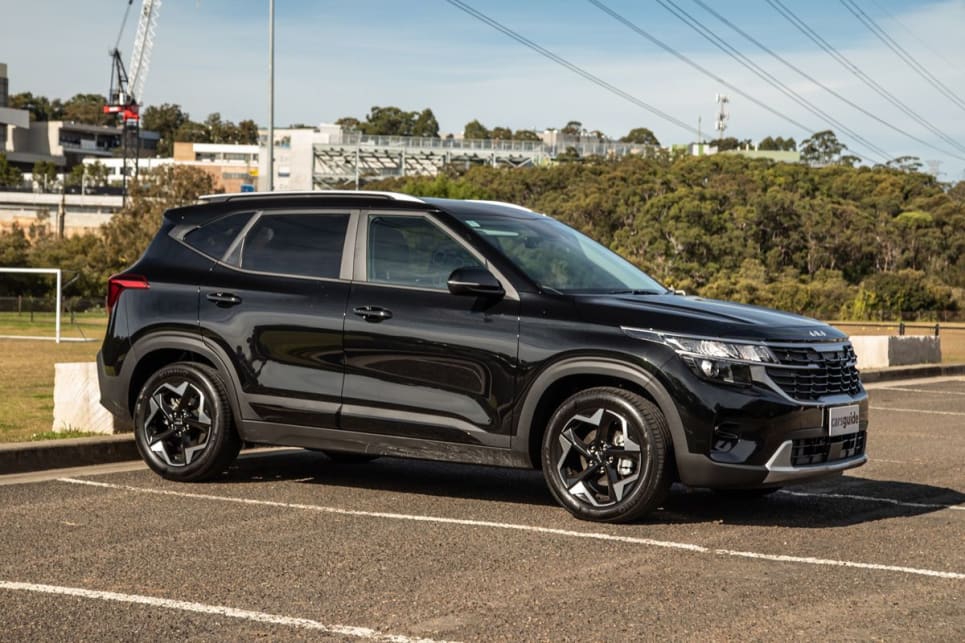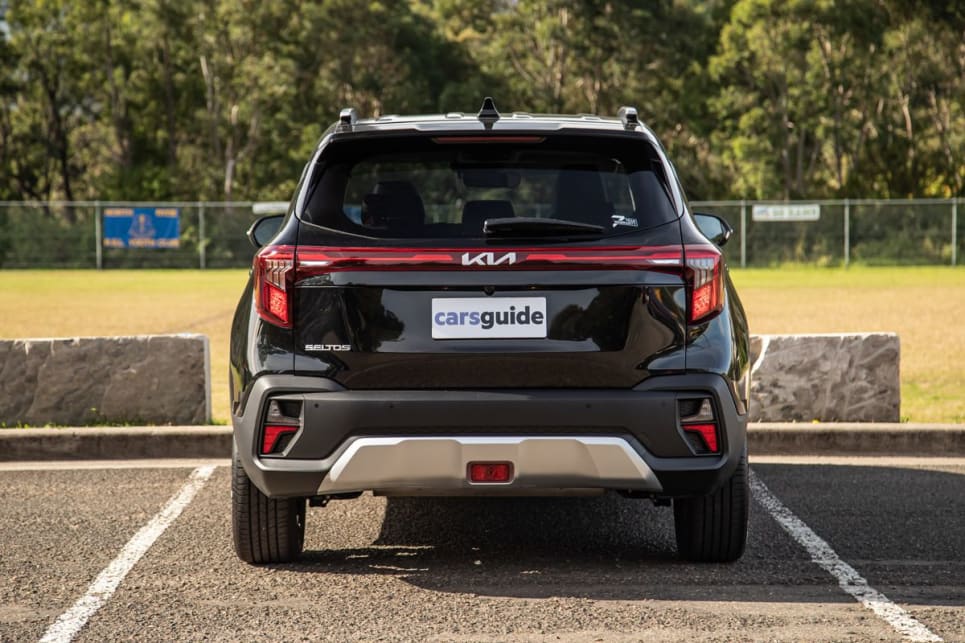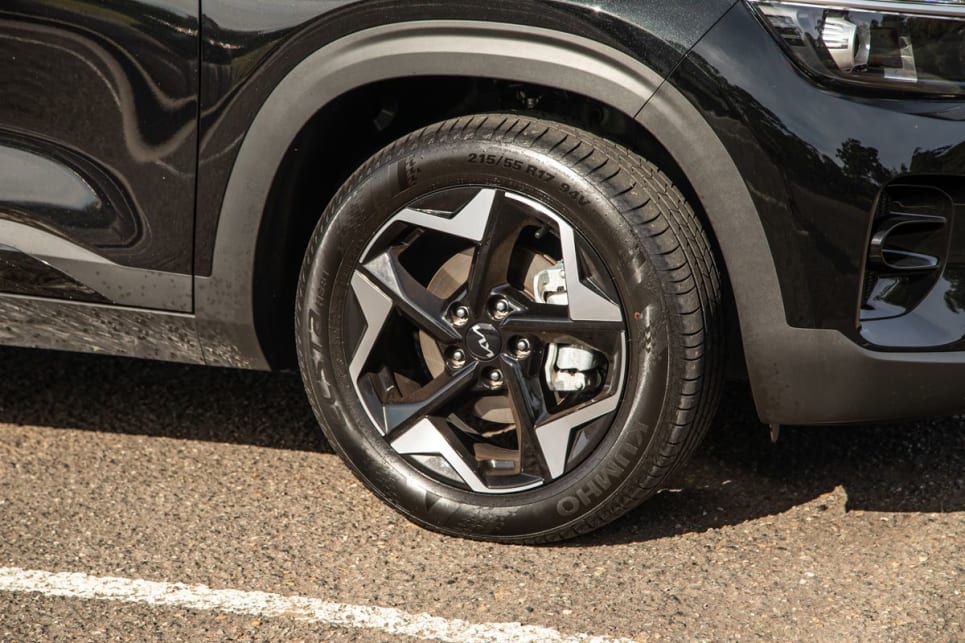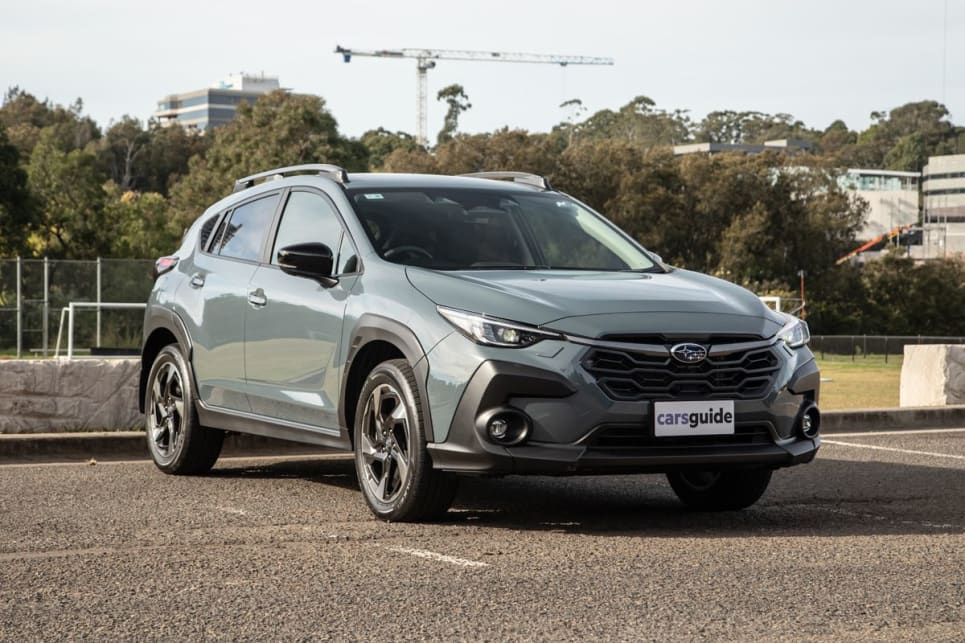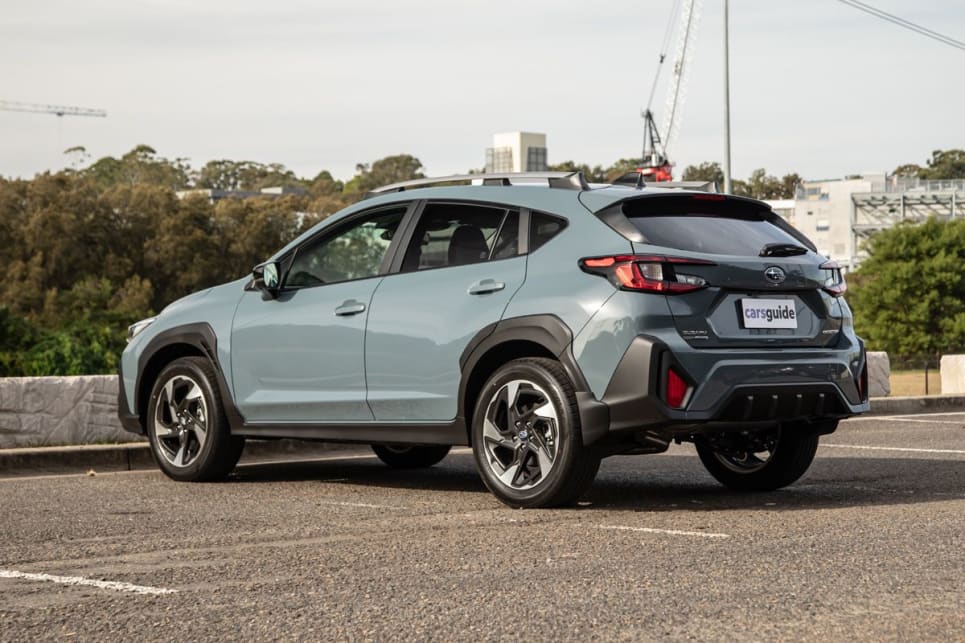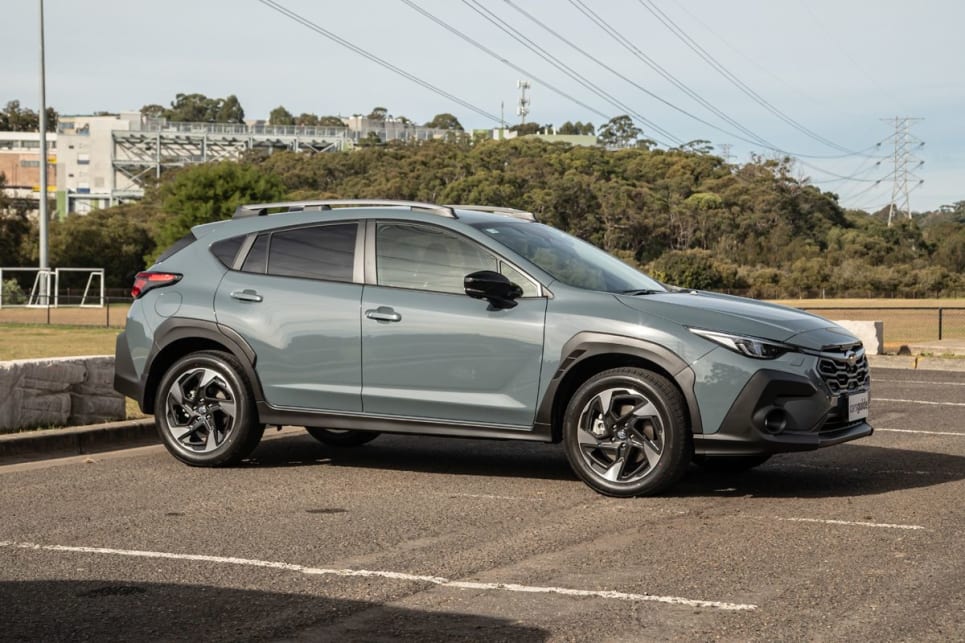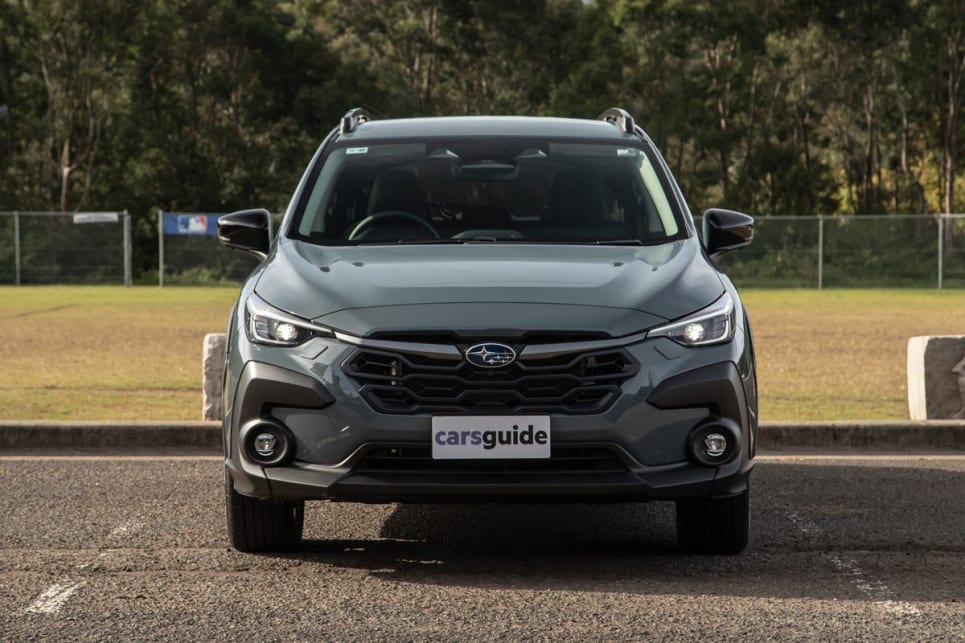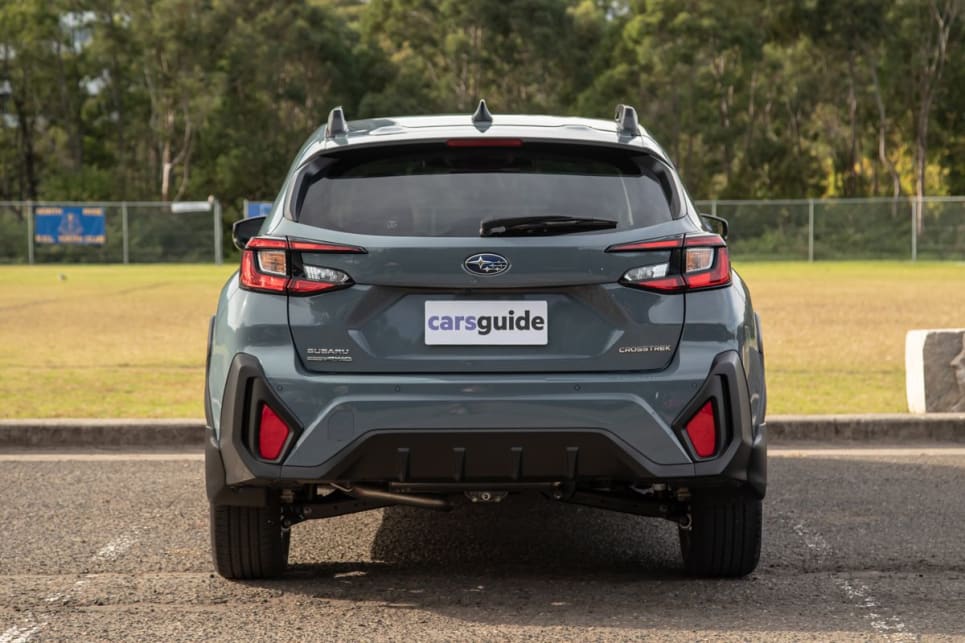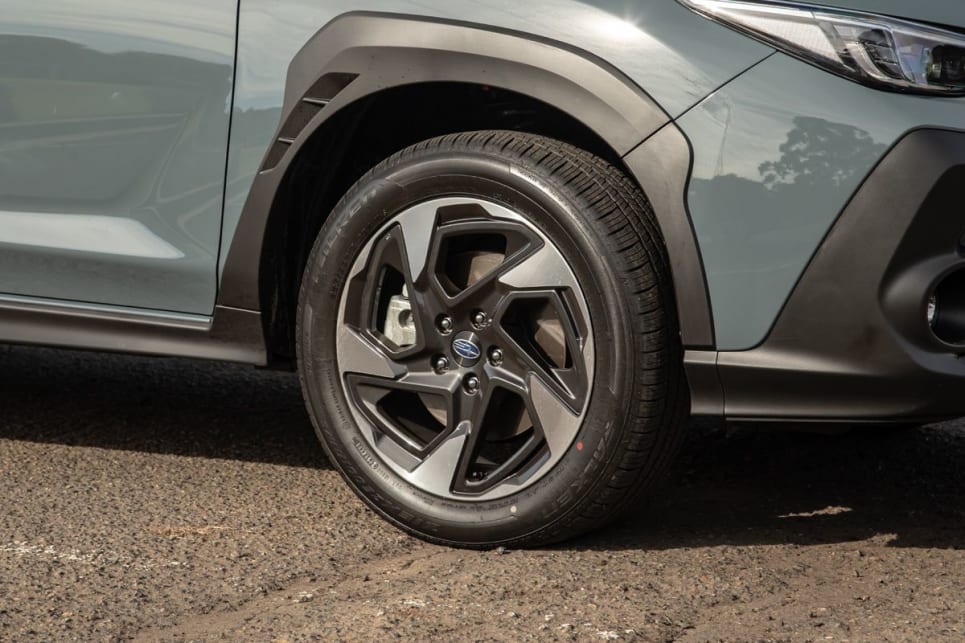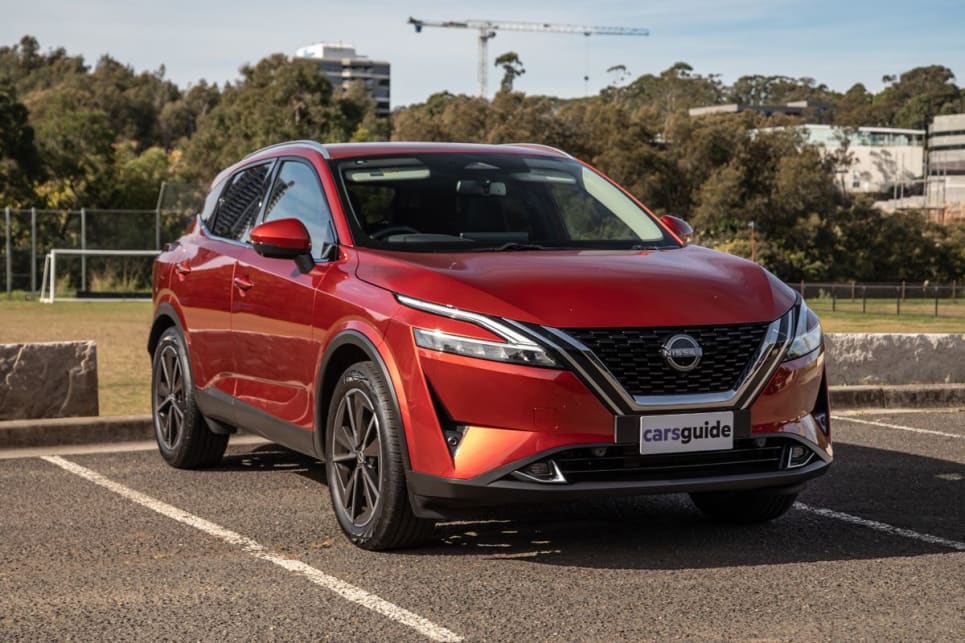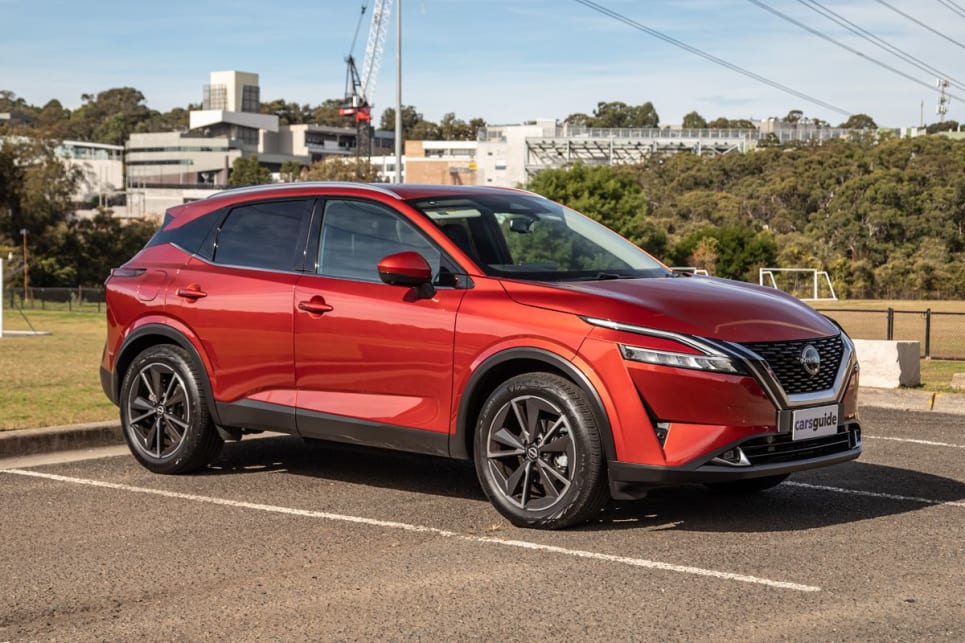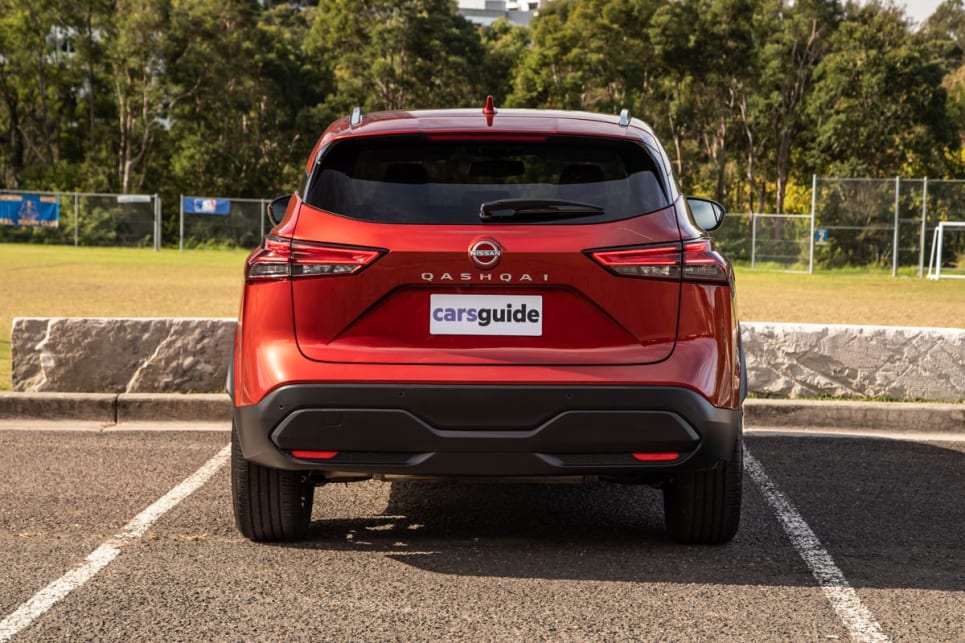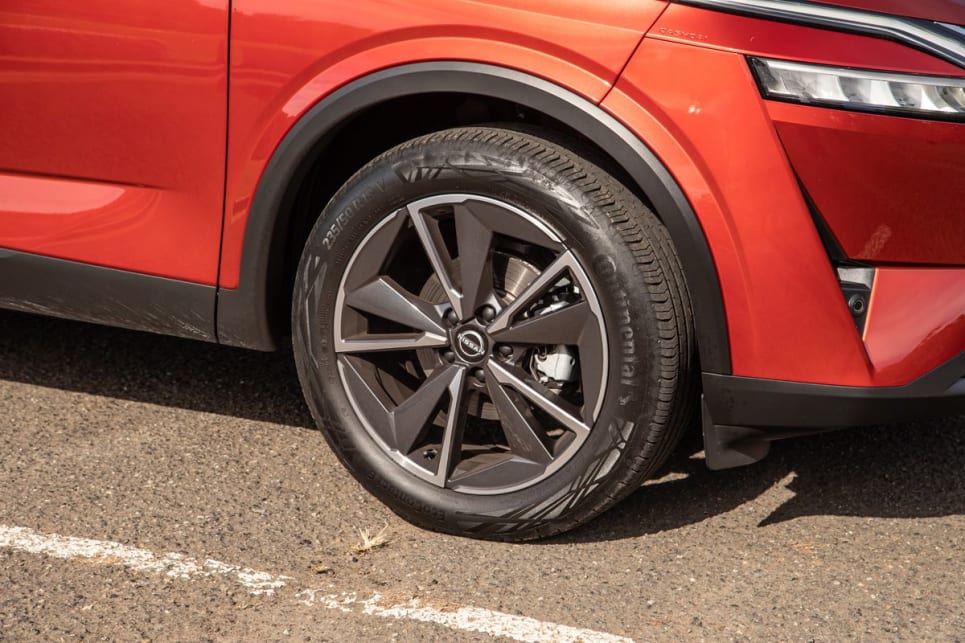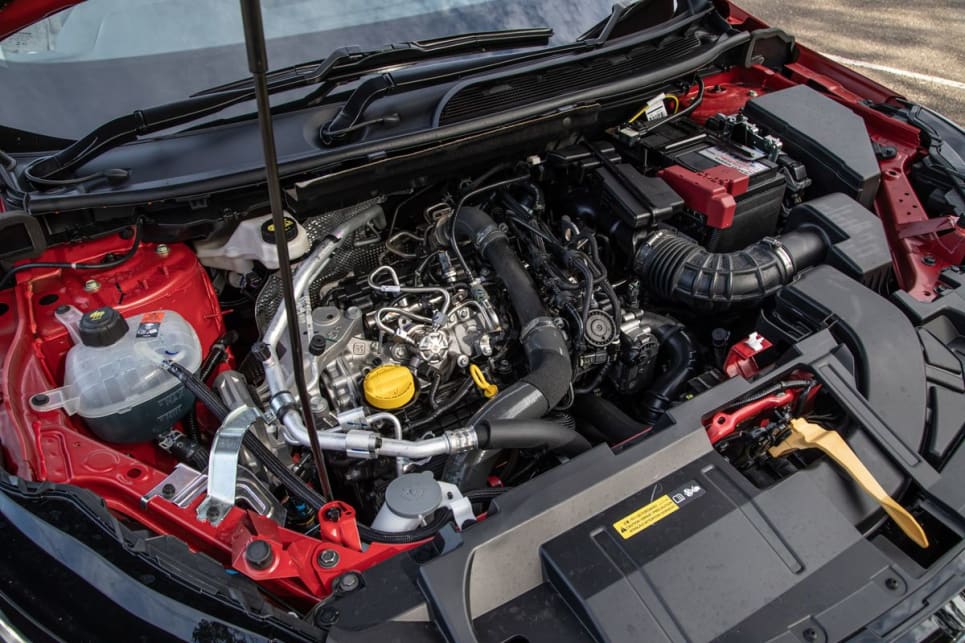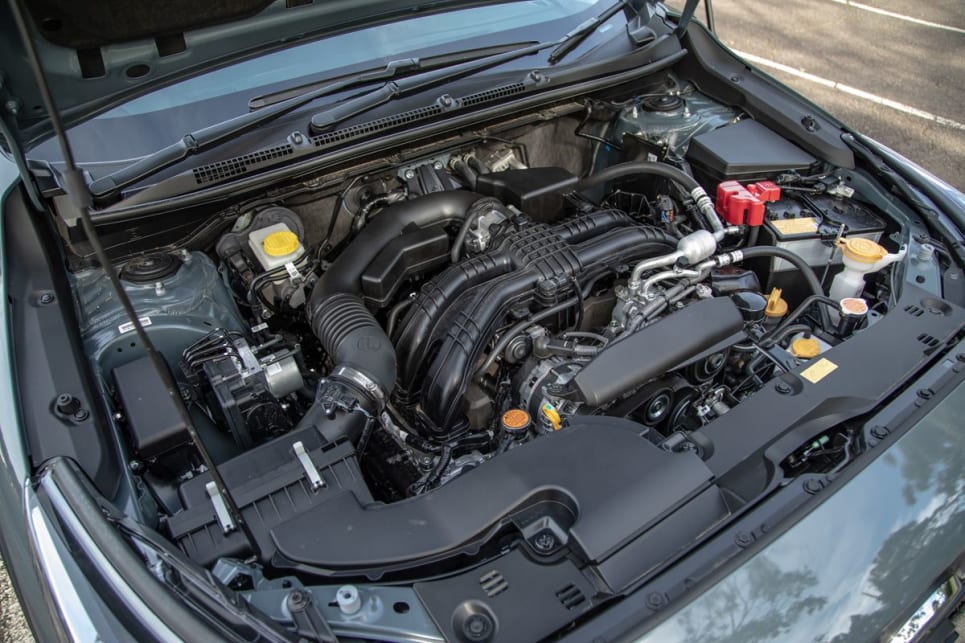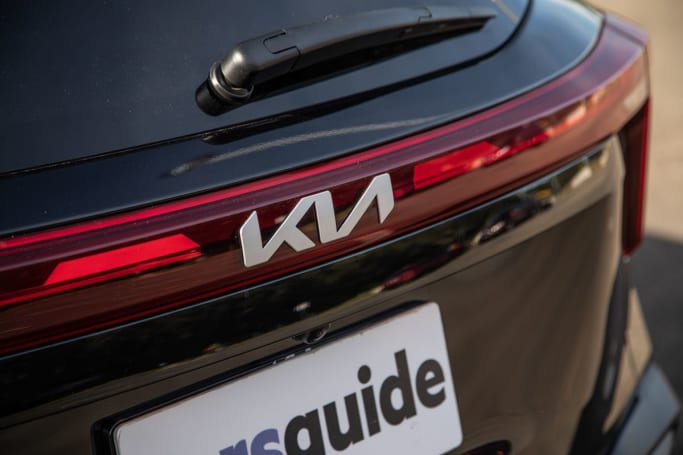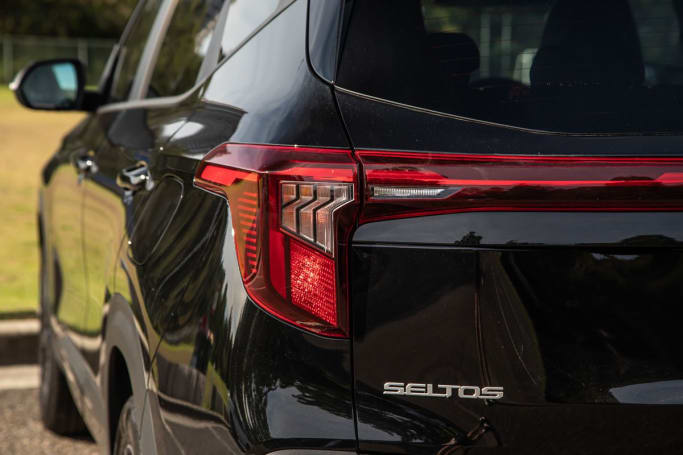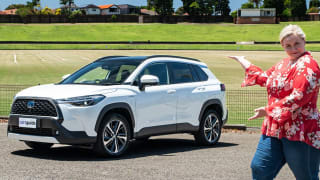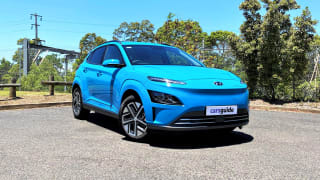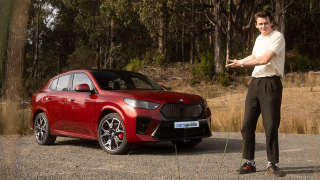An SUV in this class needs to be practical, as most family buyers who don't want a big mid-sizer still need a small SUV to be up for all of their family challenges.
On this test, two SUVs perform, while one falls short.
Kicking off with our budget player, the Seltos Sport+, and things are very good. The front seat offers a commanding view of the road, with a great seating position, and the largest rear window of our choices here, handing it an automatic win for overall visibility from the driver's position.
-
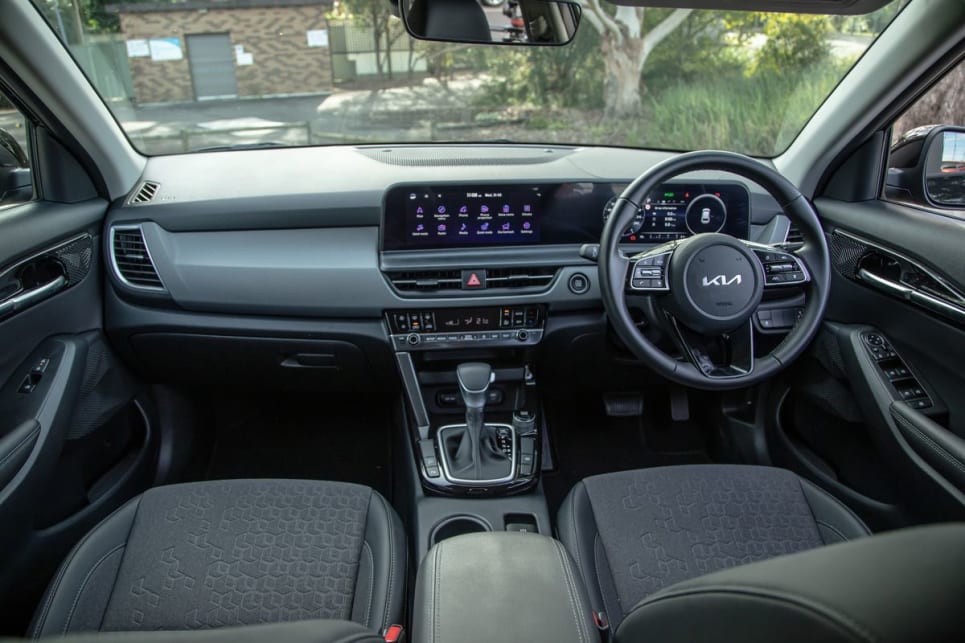 Like most Kia products, storage in the cabin is great.
Like most Kia products, storage in the cabin is great.
-
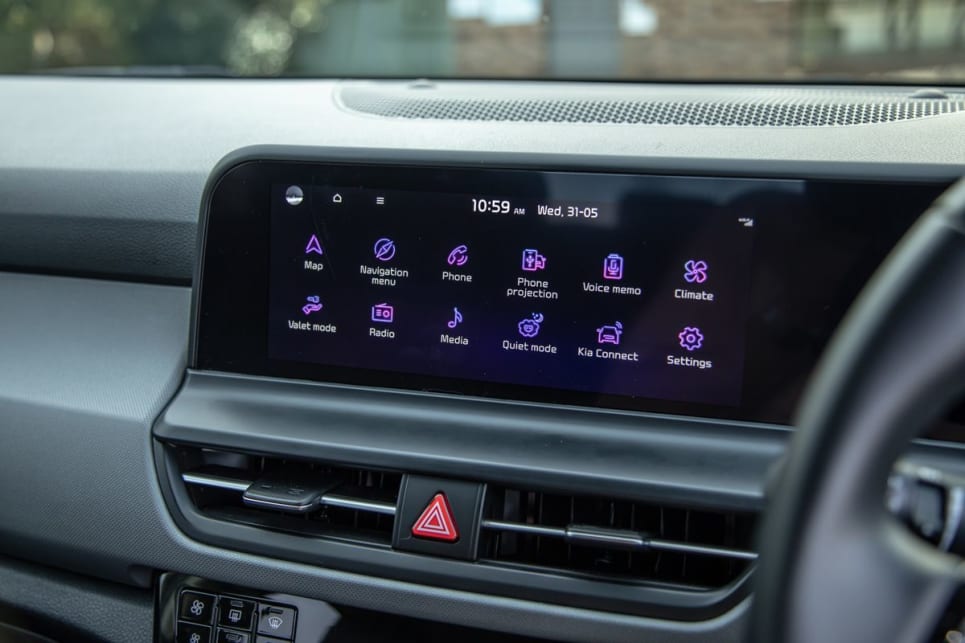 Thankfully, the software on its big multimedia screen is fast and slick and well laid out.
Thankfully, the software on its big multimedia screen is fast and slick and well laid out.
-
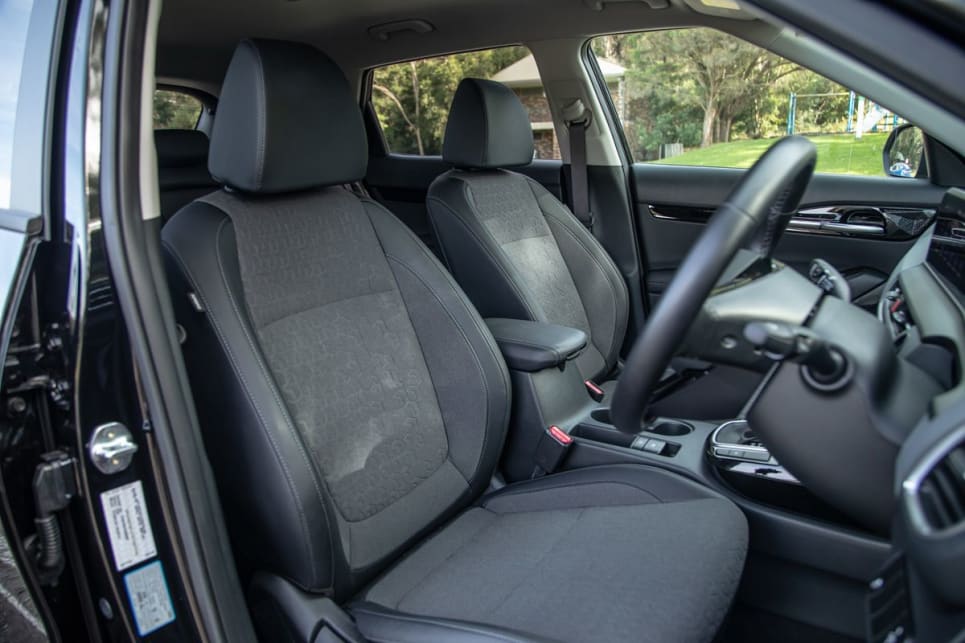 The front seat offers a commanding view of the road, with a great seating position, and the largest rear window of our choices here, handing it an automatic win for overall visibility from the driver’s position.
The front seat offers a commanding view of the road, with a great seating position, and the largest rear window of our choices here, handing it an automatic win for overall visibility from the driver’s position.
-
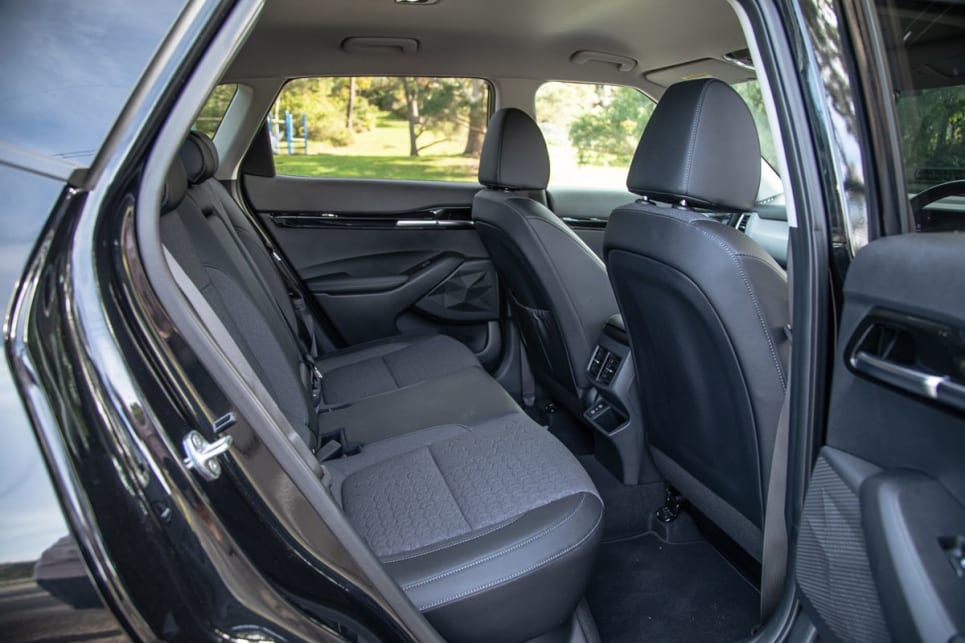 The back-seat in the Seltos is, by a close margin, the best on this test, with superior headroom compared to the Nissan and the Subaru.
The back-seat in the Seltos is, by a close margin, the best on this test, with superior headroom compared to the Nissan and the Subaru.
It also offers plenty of room for someone 182cm tall like me, as well as good adjustability of both the seat and steering column, even if it's the only car without an electric driver's seat.
Like most Kia products, storage in the cabin is great, with a big bottle holder and map pocket combo in the door trim, a pair of large but non-variable bottle holders in the centre console, a two-tier shelf below the climate unit good for wallets and phones, and an additional tray behind the electronic parking brake good for the same sorts of objects.
While it scores USB-A, USB-C and a 12-volt connector up front, it is the only car with no wireless charging.
-
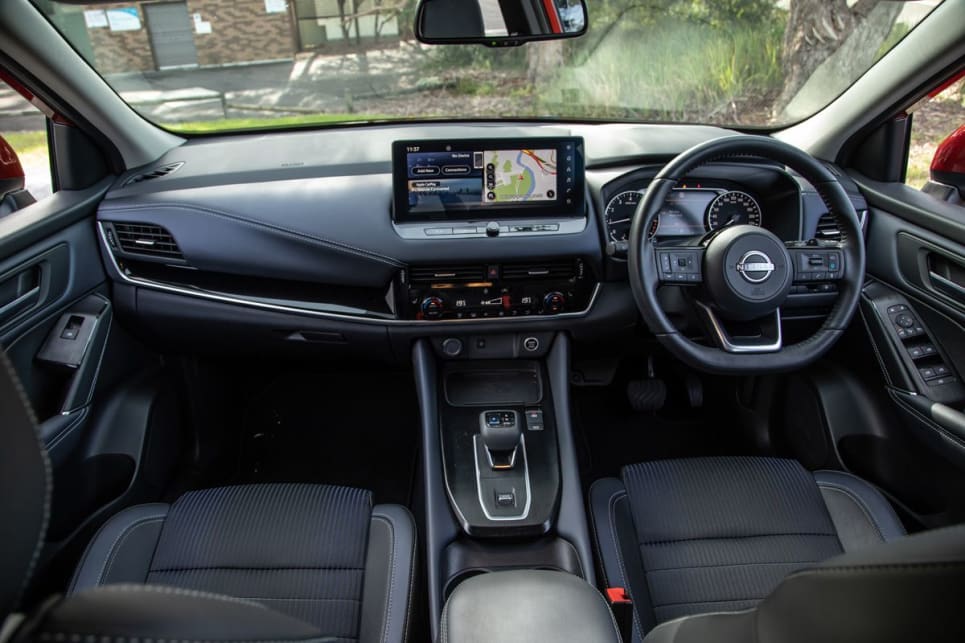 Up front, passengers are treated to nice plush seats, the most extensive list of trims in the doors and across the dashboard, and even soft materials for your knees.
Up front, passengers are treated to nice plush seats, the most extensive list of trims in the doors and across the dashboard, and even soft materials for your knees.
-
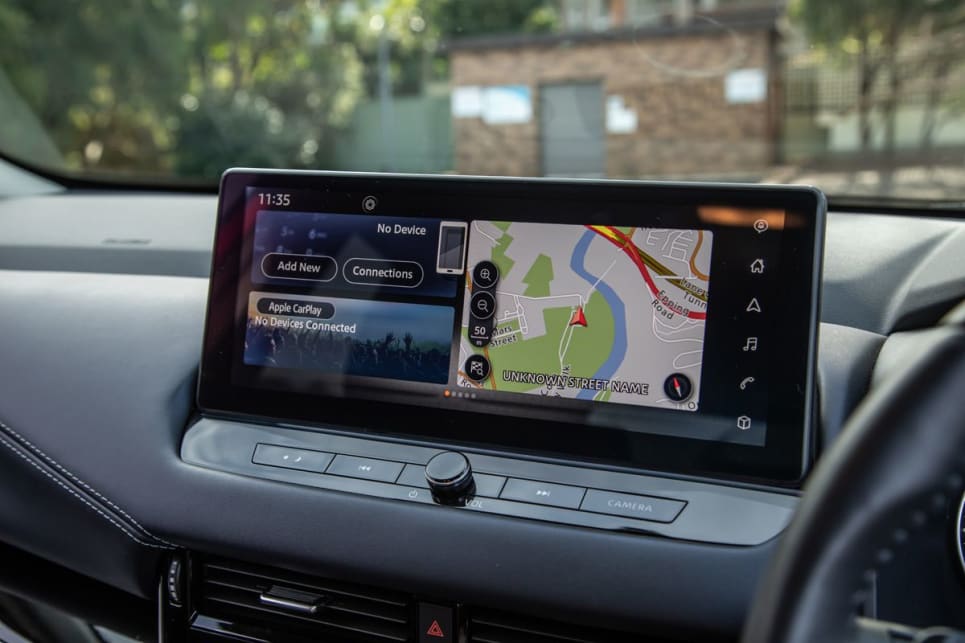 Unlike the other two cars on this test, there’s little about it which tries to dazzle you with over-the-top tech.
Unlike the other two cars on this test, there’s little about it which tries to dazzle you with over-the-top tech.
-
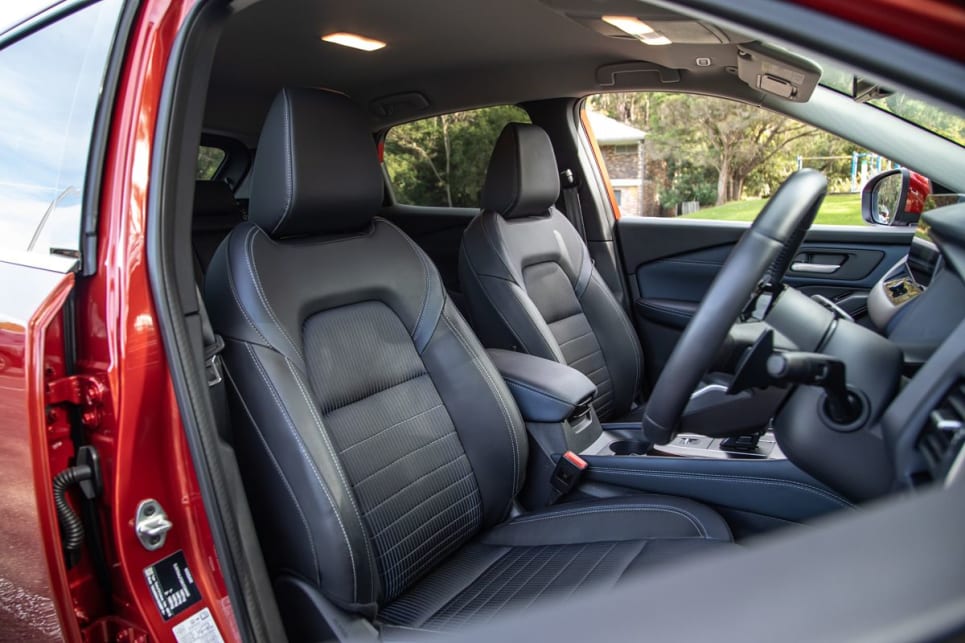 Adjustability, like the other cars here, is good, although visibility over the nose is more limited.
Adjustability, like the other cars here, is good, although visibility over the nose is more limited.
-
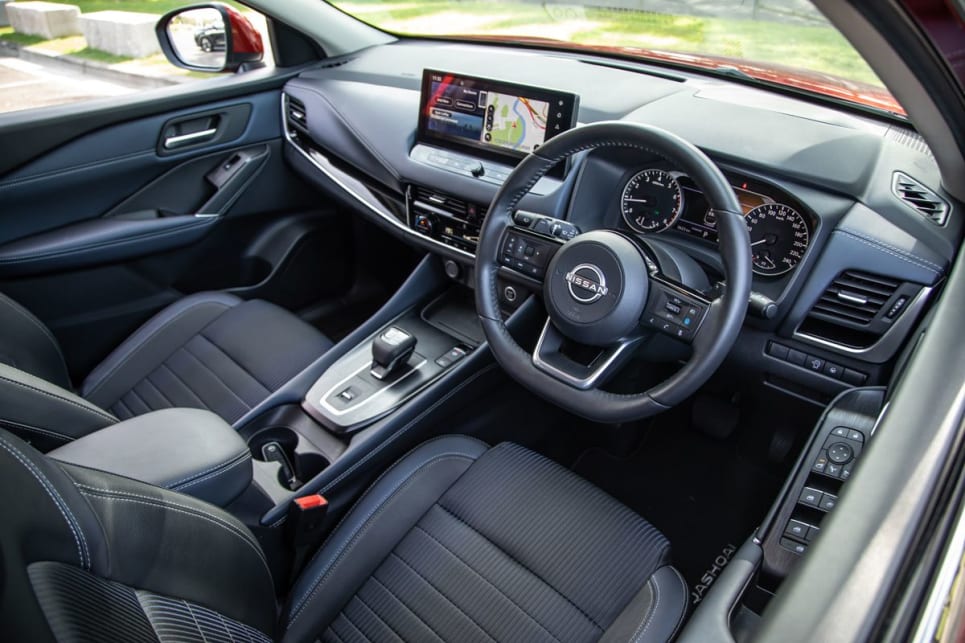 Good thing the Nissan is also the only car with a handy 360-degree parking suite.
Good thing the Nissan is also the only car with a handy 360-degree parking suite.
-
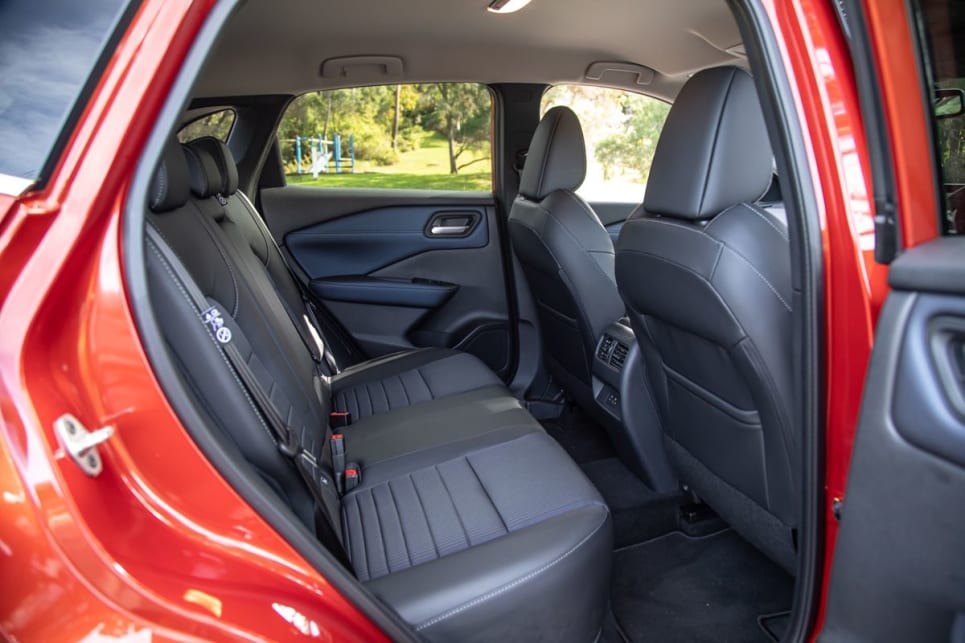 The rear seat continues the plush treatment, with soft materials on the backs of the front seats, and into the doors.
The rear seat continues the plush treatment, with soft materials on the backs of the front seats, and into the doors.
Thankfully, the software on its big multimedia screen is fast and slick and well laid out, and there is a sufficient number of buttons and dials for adjusting climate and volume functions for relatively distraction-free driving.
The back-seat in the Seltos is, by a close margin, the best on this test, with superior headroom compared to the Nissan and the Subaru, and good legroom, even behind my own driving position.
There's cheap plastic trim on the back of the driver's seat, to match the cheap plastic trim in the doors, lowering the ambiance of the space, but it's all hard wearing, which is good for those with kids.
-
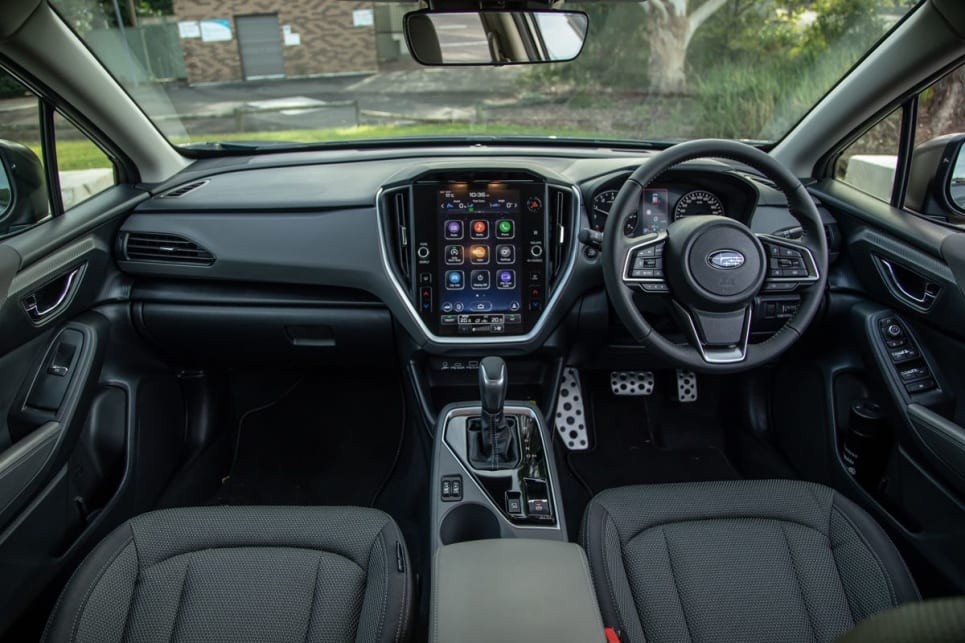 Inside it feels cosy and ready for action with its chunky steering wheel and seemingly hard-wearing cloth seat trim.
Inside it feels cosy and ready for action with its chunky steering wheel and seemingly hard-wearing cloth seat trim.
-
 While it is harder to climb into thanks to a descending, hatch-like roofline, the roof itself has an extrusion in it to grant rear passengers a little extra headroom.
While it is harder to climb into thanks to a descending, hatch-like roofline, the roof itself has an extrusion in it to grant rear passengers a little extra headroom.
-
 The new portrait touchscreen, as part of a major digital overhaul, is welcome, but somehow the brand has managed to make this system too busy.
The new portrait touchscreen, as part of a major digital overhaul, is welcome, but somehow the brand has managed to make this system too busy.
Again, there's a bottle holder in the door on each side, and a further two small ones in the drop-down armrest, and the Kia offers USB-A connectors and adjustable air vents for rear passengers.
Boot space is also a clear win for the Kia. Not only does it have the largest volume (refer to the table below), but it's also a big, square, accessible space, and the easiest to fit our three-piece demo luggage set, or pram.
It is also the only car on this test to offer a rare full-size matching spare wheel under the floor, but is also the only car missing a luggage cover.
Next up, the Subaru. It looks the most like a hatchback of our set here, and feels it in the cabin.
Up-front it's notably the most closed-in and cosy space, which comes with the downside of having the least visibility of our trio, particularly out its small rear window.
It feels purposeful, though, with the chunky wheel and seats suiting the off-road-ready vibe and there are enough high-quality materials throughout the cabin to keep it soft and comfortable.
Despite its more diminutive interior dimensions, it still has sufficient space for someone 182cm tall in the front, and adjustability isn't bad, either.
-
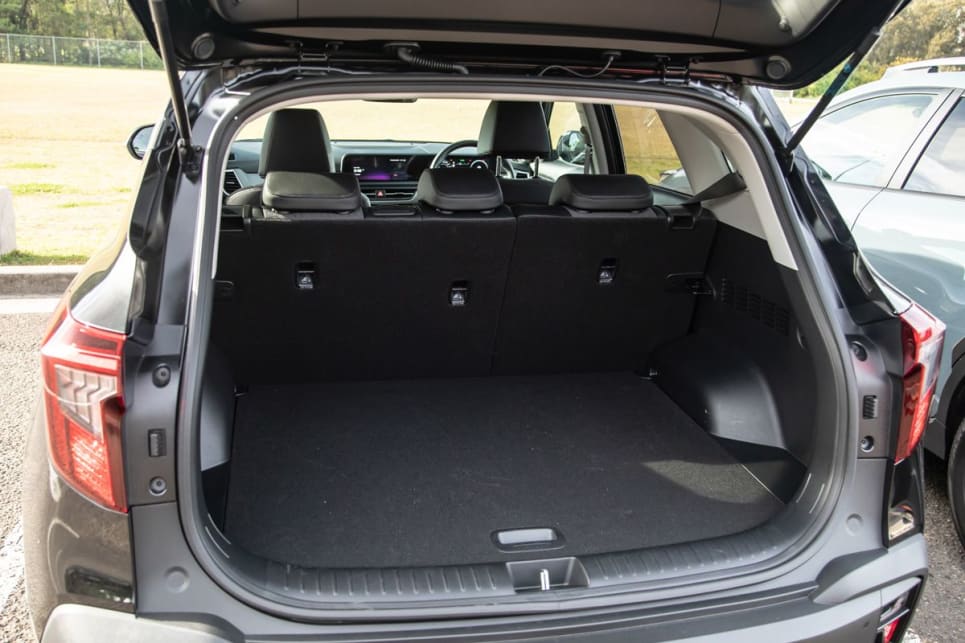 Boot space is also a clear win for the Kia.
Boot space is also a clear win for the Kia.
-
 Not only does it have the largest volume (refer to the table below), but it’s also a big, square, accessible space, and the easiest to fit our three-piece demo luggage set, or pram.
Not only does it have the largest volume (refer to the table below), but it’s also a big, square, accessible space, and the easiest to fit our three-piece demo luggage set, or pram.
There are decent bottle holders in the doors, a further two fixed ones in the centre console, and a tray below the media screen with power outlets and a wireless charger.
Interestingly, the wireless charger is almost useless because Subaru has chosen to make it a smooth plastic finish, so your phone slides out of the area in the first corner you encounter.
It's easily fixed with a BYO rubber mat, but still, why was this not thought of in development?
-
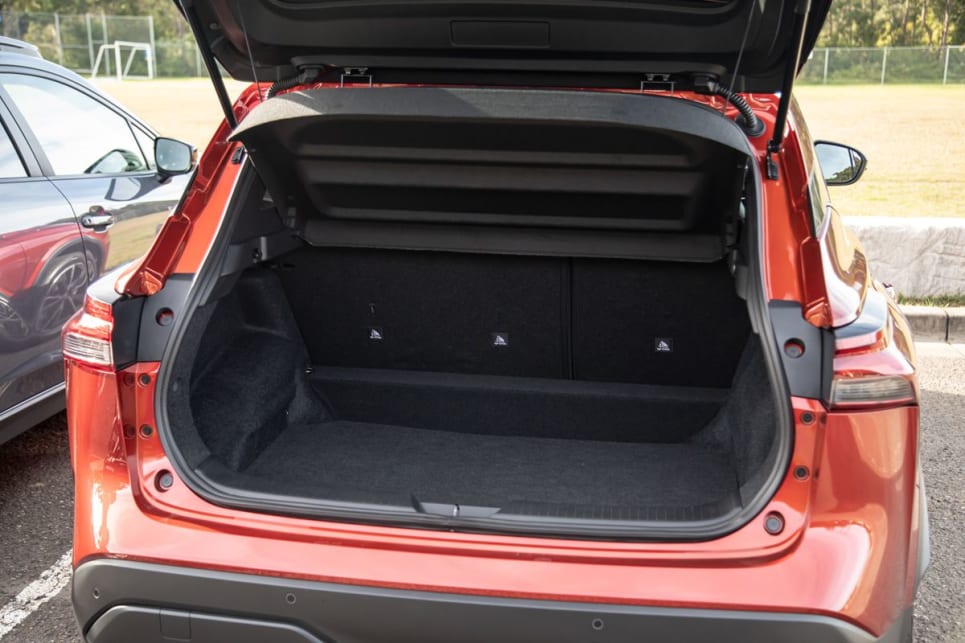 The Nissan lands between the others when it comes to practicality, but it’s still within striking distance of the Seltos in terms of overall space.
The Nissan lands between the others when it comes to practicality, but it’s still within striking distance of the Seltos in terms of overall space.
-
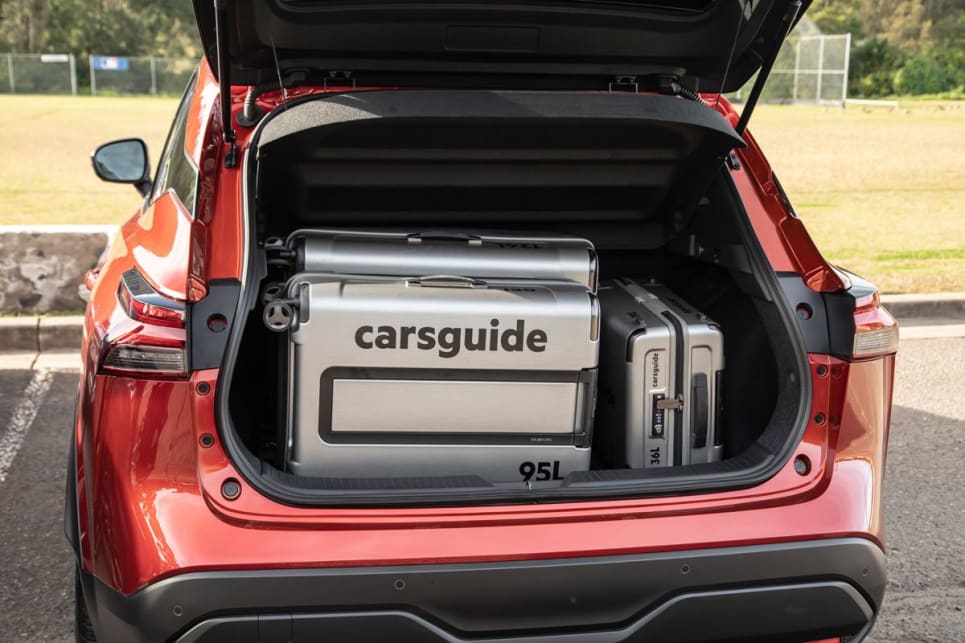 The boot is a tad smaller than the Kia’s, and a little less square, but offers soft claddings for all the surfaces, so your luggage won’t scratch hard plastics.
The boot is a tad smaller than the Kia’s, and a little less square, but offers soft claddings for all the surfaces, so your luggage won’t scratch hard plastics.
The back seat is a surprise. While it is harder to climb into thanks to a descending, hatch-like roofline, the roof itself has an extrusion in it to grant rear passengers a little extra headroom, and it works.
I was also surprised to see the rear seat has been cleverly engineered to maximise knee room, although the centre position is all but useless for an adult due to the centre raise required for this car's all-wheel drive system taking up all the legroom.
The Subaru also has the least rear-seat amenity, with the smallest door bottle holders and drop-down armrest holders, no adjustable air vents, with only a USB-A and USB-C connector as luxuries for those riding in the back.
-
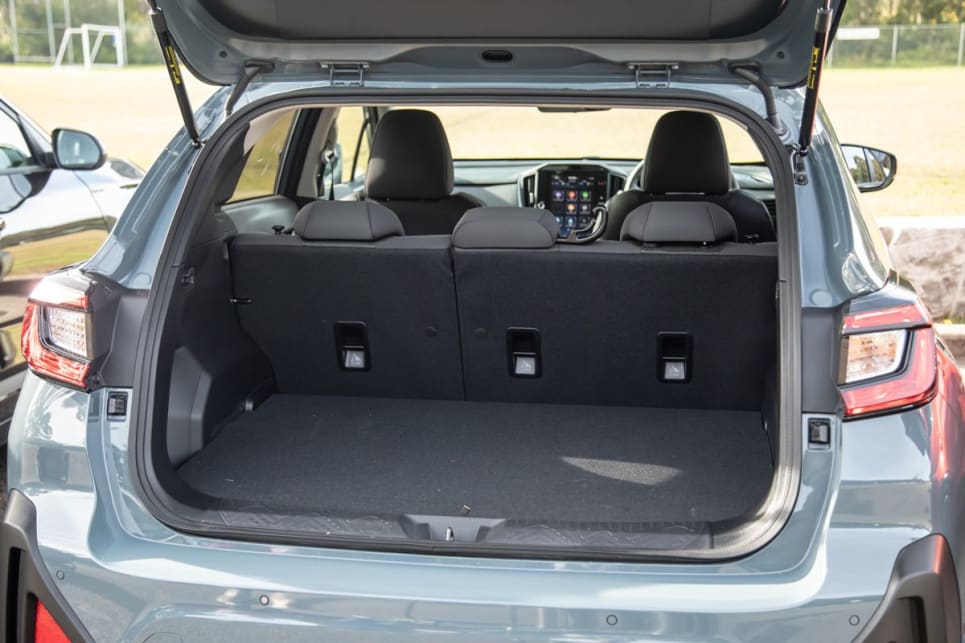 The real deal-breaker for family buyers, though, will be the Crosstrek’s boot.
The real deal-breaker for family buyers, though, will be the Crosstrek’s boot.
-
 It was the only car which couldn’t fit the whole demo luggage set, although it could still accommodate the pram.
It was the only car which couldn’t fit the whole demo luggage set, although it could still accommodate the pram.
The real deal-breaker for family buyers, though, will be the Crosstrek's boot. Despite boot space being a key criticism of this car's XV predecessor, the Crosstrek manages to crop some 20 or so litres from the space this time around, down to just 291L, by far the smallest on this test.
It was the only car which couldn't fit the whole demo luggage set, although it could still accommodate the pram.
The Subaru's final party trick is its impressive 220mm ground clearance to go with its all-wheel drive system, by far the most capable of the choices here if you're venturing beyond the tarmac, although it still only has a space-saver spare under the boot floor.
The Nissan lands between the others when it comes to practicality, but it's still within striking distance of the Seltos in terms of overall space.
Up front, passengers are treated to nice plush seats, the most extensive list of trims in the doors and across the dashboard, and even soft materials for your knees.
These add up and go a long way towards making the Nissan feel as though it has the most upmarket cabin of the choices on this test.
Adjustability, like the other cars here, is good, although visibility over the nose is more limited, as you sit lower and the dash-line is higher. Good thing the Nissan is also the only car with a handy 360-degree parking suite.
Bottle holders include a massive one in the doors, two more with variable edges in the centre console, and a nice big rubberised charging bay for your phone under the climate unit.
The rear seat continues the plush treatment, with soft materials on the backs of the front seats, and into the doors.
I found I had plenty of space behind my own driving position, roughly on-par with the Seltos, and the Qashqai serves rear passengers with large bottle holders in the doors, a further two small ones in the drop-down armrest, adjustable air vents, as well as USB-A and USB-C charging ports.
The boot is a tad smaller than the Kia's, and a little less square, but offers soft claddings for all the surfaces, so your luggage won't scratch hard plastics.
The Qashqai easily consumed the whole CarsGuide luggage set or the pram, and under the floor there is a space-saver spare. The Qashqai also has the highest towing capacity of our choices here, refer to the table below for more.
| Subaru Crosstrek R | Nissan Qashqai ST-L | Kia Seltos Sport+ |
Boot space | 291L | 429L | 433L |
Rear amenity | USB A + C | Vents, USB A + C | Vents, USB A |
Dimensions (L x W x H - mm) | 4495 x 1800 x 1600 | 4425 x 1835 x 1625 | 4385 x 1800 x 1635 |
Towing capacity unbraked/braked (kg) | 650/1400 | 750/1500 | 600/1100 |
Ground clearance | 220mm | 193mm | 170mm |
Turning circle | 10.8 | 11.1m | 10.6m |
Spare | Space-saver | Space-saver | Full-size alloy |
Score
Subaru Crosstrek R | Nissan Qashqai ST-L | Kia Seltos Sport+ |
| 6 | 8 | 8 |
